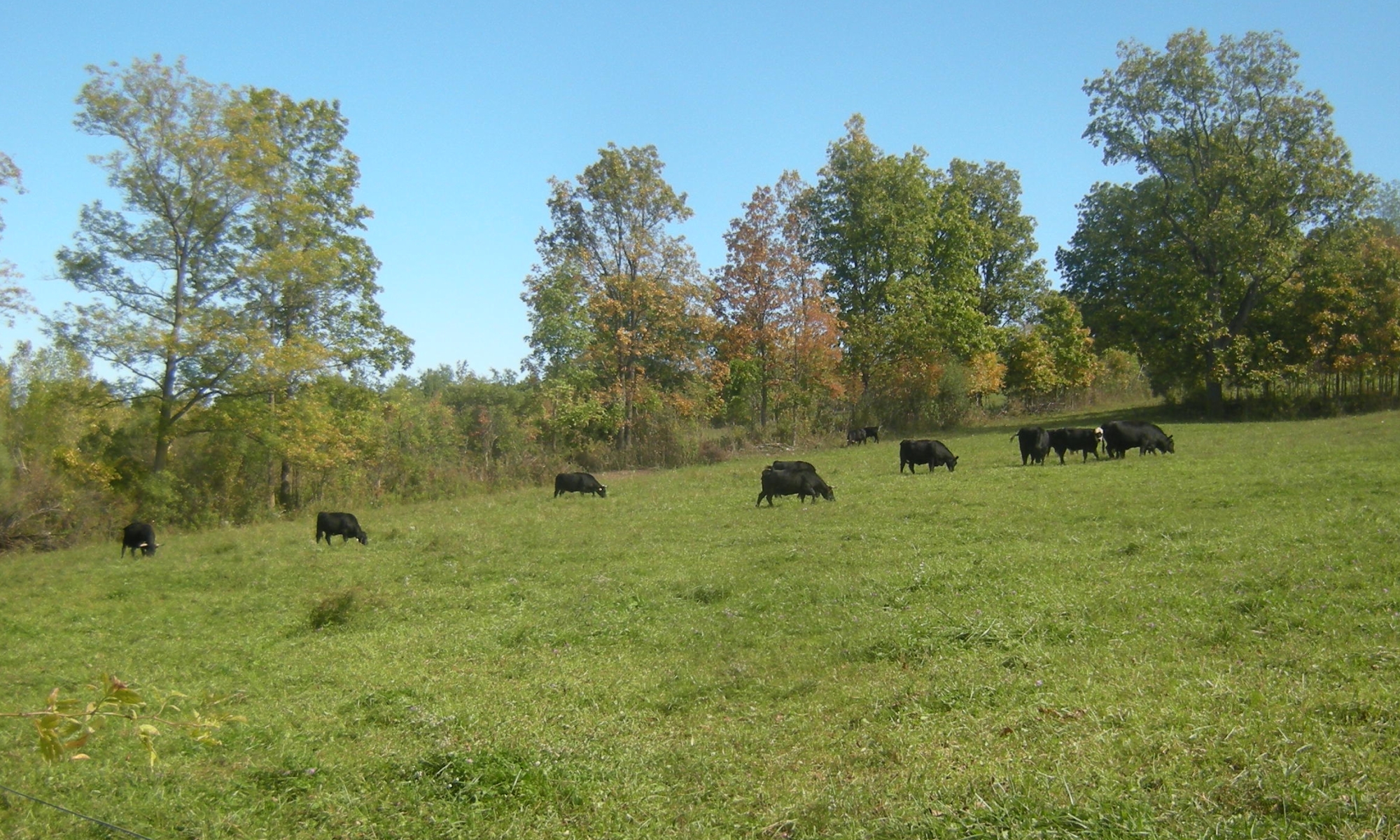When The Farmer’s father was growing up, their family house burned down while they were out of town. Eventually the family landed on a 100+ acre former farm. The Farmer’s grandfather raised beef and had a garden to help feed his seven children. This was the property that The Farmer knew as “Grandma & Grandpa’s house.”
Of those seven children, several stayed involved in agricultural pursuits.
Child 1 (The Farmer’s father) ended up on his own small farm doing part-time agricultural stuff. His first career was teaching agricultural mechanics, and his last career was performing testing at farms as part of the New York State Mastitis Control Program. He now helps us with various projects on our farm.
 Child 3 ended up with part of the “old homestead” and built his own small farm (the one pictured here, at an annual Memorial Day Picnic) where his part-time pursuits include raising beef, hay, and eggs, and working in his retirement at a nearby farm.
Child 3 ended up with part of the “old homestead” and built his own small farm (the one pictured here, at an annual Memorial Day Picnic) where his part-time pursuits include raising beef, hay, and eggs, and working in his retirement at a nearby farm.
Child 5 married a man who was the owner/operator of a milk trucking company.
Child 6 married and ended up on a small farm of her own raising beef part-time and having a family milk cow.
Child 7 bought the remainder of the “old homestead” and while he does not farm per se, he does breed and raise Newfoundlands as a part-time venture.
The Farmer does not expect 70% of his offspring to maintain an intimate connection with agriculture, but it has been nice to give them that exposure as they are growing up.


 Pictured above is a young man emptying a hay wagon. But there’s more:
Pictured above is a young man emptying a hay wagon. But there’s more: Child 3 ended up with part of the “old homestead” and built his own small farm (the one pictured here, at an annual Memorial Day Picnic) where his part-time pursuits include raising beef, hay, and eggs, and working in his retirement at a nearby farm.
Child 3 ended up with part of the “old homestead” and built his own small farm (the one pictured here, at an annual Memorial Day Picnic) where his part-time pursuits include raising beef, hay, and eggs, and working in his retirement at a nearby farm.

 March can have so many different faces. Last week we were looking at 12 inches of snow with paths cleared, but a good snow cover on everything else. With the freeze-thaw pattern – below 32F at night and above during the day – we will see the snow compact and will see some water leave the property, but much will get soaked into the ground.
March can have so many different faces. Last week we were looking at 12 inches of snow with paths cleared, but a good snow cover on everything else. With the freeze-thaw pattern – below 32F at night and above during the day – we will see the snow compact and will see some water leave the property, but much will get soaked into the ground.
 Then we plan for the summer growing season – what seeds and tubers should be purchased, what chicks or poults will we want, what equipment needs to be repaired. Next we purchase those things and repair broken things. Finally, we learn, read, and take classes related to farming, so that we are better prepared when it is time to do our summer growing.
Then we plan for the summer growing season – what seeds and tubers should be purchased, what chicks or poults will we want, what equipment needs to be repaired. Next we purchase those things and repair broken things. Finally, we learn, read, and take classes related to farming, so that we are better prepared when it is time to do our summer growing.